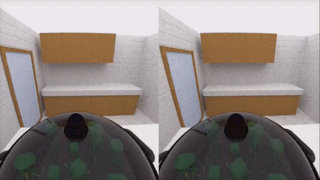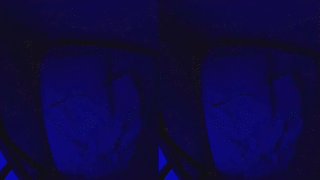Part of my research on binocular phenomena using stereoscopic VR connects very well to reproducing phenomena in dreams such as simultaneous existence of different dream elements in the same dream space or movement of dream body induced by eye movements.
Interobjects are dream elements like persons, animals, places or objects where multiple identities simultaneously occupy the same place. They are described by psychologist and psychoanalyst Mark Blechner as convergences of dream thoughts and as new creations derived from blends of other objects (Blechner 2002). I reproduced interobjects‘ multiple identities by showing each eye one of these identities.
The second example reproduces a false awakening dream, where the floating movement of my dream body in the room is presented to left and right eye with delays in time. This reproduction experiment is inspired from the proposition of Jeniffer Windt, researcher on dreaming and philosophy of cognitive science, that movement sensations in dreams, such as the movement of eyes, have indeed influence on generation of dream.(Windt 2017)
The here reproduced dream scene is a false awakening from 30.10.2017 where I was floating in my room in dream. The movement in the room is by up to 3 frames delayed between two eyes depending on the movement direction. One eye image starts moving and the other eye image follows.
Binocular Dreams is a series animations within the framework of the larger project „Binocular Waves“. Music and audio is composed by electronic music artist fraternalbee in stereo differing between two ear perception in octave, delay or timbre.
If you have a VR compatible smartphone and VR Headset such as cardboard you can watch Binocular Dreams here:
Citations:
Blechner, M. J. (2002). Disjunctive cognition and interobjects: What psychoanalytic dream study can tell us about the brain, 1–9.
Windt, J. M. (2017). Predictive brains, dreaming selves, sleeping bodies: how the analysis of dream movement can inform a theory of self- and world-simulation in dreams. Synthese. https://doi.org/10.1007/s11229-017-1525-6
